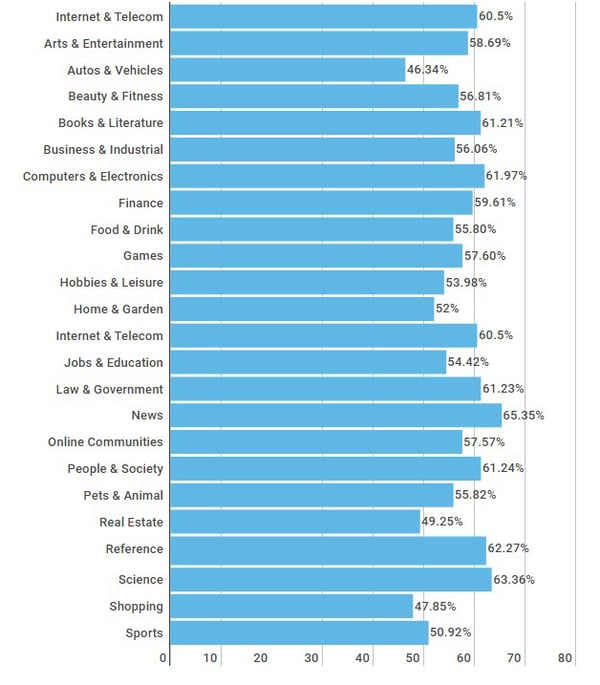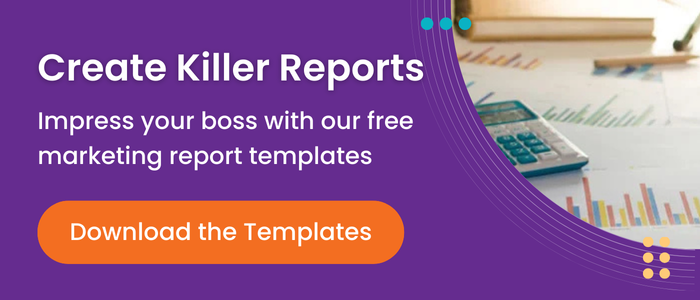Are High Bounce Rates Always Bad?

Many online marketers understand that bounce rate can be an important factor in a web site’s analytics, but it’s also a metric that can cause needless confusion. What exactly does this KPI measure?
A “bounce” happens when a visitor visits a website page then leaves the website without clicking to any other page on that site.
In other words, when someone visits one page on your site without taking any further action, that produces a 100% bounce rate for that session. If a visitor to your site clicks through to any other page on your site, the bounce rate for that session is 0%. A higher bounce rate indicates fewer visitors are clicking on links to other pages on your site, whereas a lower bounce rate indicates more visitors are clicking to other pages.
The total bounce rate percentage is calculated by dividing the number of bounced visits (i.e., single-page visits) by the total of all visits within a specific date range. You can calculate the bounce rate for one page on your site, a section of pages, or all of the pages on your site.
Evaluating Bounce Rates
So, what’s a good bounce rate for your website? Well, that gets tricky. A high bounce rate might be a bad sign, but this isn’t always the case.
Why a high bounce rate might be bad
On one hand, high bounce rates could suggest to the search engines that your website’s content isn’t high-quality, if people come to a page on your site and then leave without visiting any other pages. This could potentially lead to lower search rankings. Google claims it doesn’t use bounce rate in its search ranking algorithms, but as Neil Patel shows, evidence suggests the metric still at least indirectly affects ranking results.
A high bounce rate might also be a sign that people aren’t finding what they need on your website quickly. Website users typically have extremely short attention spans, and if they can’t find what they want, they’ll click away to find it elsewhere. This could suggest that your navigation is clunky or unhelpful, or that your site isn’t visually appealing to your visitors.
Why a high bounce rate might not be bad
As with most things, context is key when it comes to bounce rates. As Google Analytics puts it, “If the success of your site depends on users viewing more than one page, then, yes, a high bounce rate is bad.” However, not every site has this goal. For example, bounce rate may not be relevant to news sites, blogs and, of course, websites with only a single page.
Related Content: How to Set SMART Marketing Goals for Your Business
For websites where success is not measured by page views, it’s helpful to know that Google Analytics can be tweaked to count any “event” on the page—such as playing a video or audio file—as an interaction. Using this setting will record the visit duration, lower the overall bounce rate, and help you measure the extent to which your visitors are engaging with your content, even if they aren’t clicking through to other pages.
In fact, a high bounce rate can sometimes be a good thing. For example, a high bounce rate may indicate that visitors are finding exactly what they need on a single page on your website—such as contact information or business hours.
Or, a high bounce can indicate a page on your site that is very different from the other pages that show up in search engines. For example, say you’ve published a blog post about a book review. Your post might appear in Google searches for the book’s title. It’s possible that some people searching for the book may click through to your blog post, read your review, but then leave your site since you’re not actually selling the book.
This isn’t necessarily a good or bad thing per se; that will depend on the goals you’ve set for the post. And in fact, every website receives its share of irrelevant traffic that contributes to bounce rates. Marketing Land offers the example of a B2B site listing several of its customers on the home page, one of which happened to be General Electric. People searching for GE would find this company’s home page in the search listing, click through, but then leave when they realized the page wasn’t relevant to their needs.
Bounce Rate Benchmarks
So, what are some benchmarks for a good bounce rate? The average bounce rate across all types of websites hovers around 58%. However, rates tend to be higher for B2B sites (61%) than for B2C sites (54%).
Average bounce rates can vary widely depending on how you’re categorizing your data. For example, the original source of the visitor has a big impact on bounce rates. Visitors clicking through from online display ads tend to bounce at 70%, while visitors from social media bounce only at 47%.
Industry is also a major factor. Consider this chart published by Digishuffle:

And yet, benchmarking is only ever helpful to an extent. What really matters is what’s normal for your website. To truly get a sense of how well the content on your website is performing, we highly suggest you conduct an audit of all the content you have published. That will give you a good idea of any outlier performers—so you can either understand what makes a page high performing, and then replicate that across your site, or you can understand what makes a page underperform, and then fix the underperformers on your site.
Additionally, Google offers several suggestions for analyzing and adjusting bounce rate, and more can be found at Search Engine Journal, Neil Patel’s site, and Digishuffle. The overall takeaway is that bounce rates can be misleading and should not be considered as an indication of a site’s performance without taking several qualifying factors into account.
When it comes digital marketing, we know how to help measure the results of your efforts. We can help you get started understanding all the basics you need to know before starting. Check out our free toolkit for marketing reports here.





